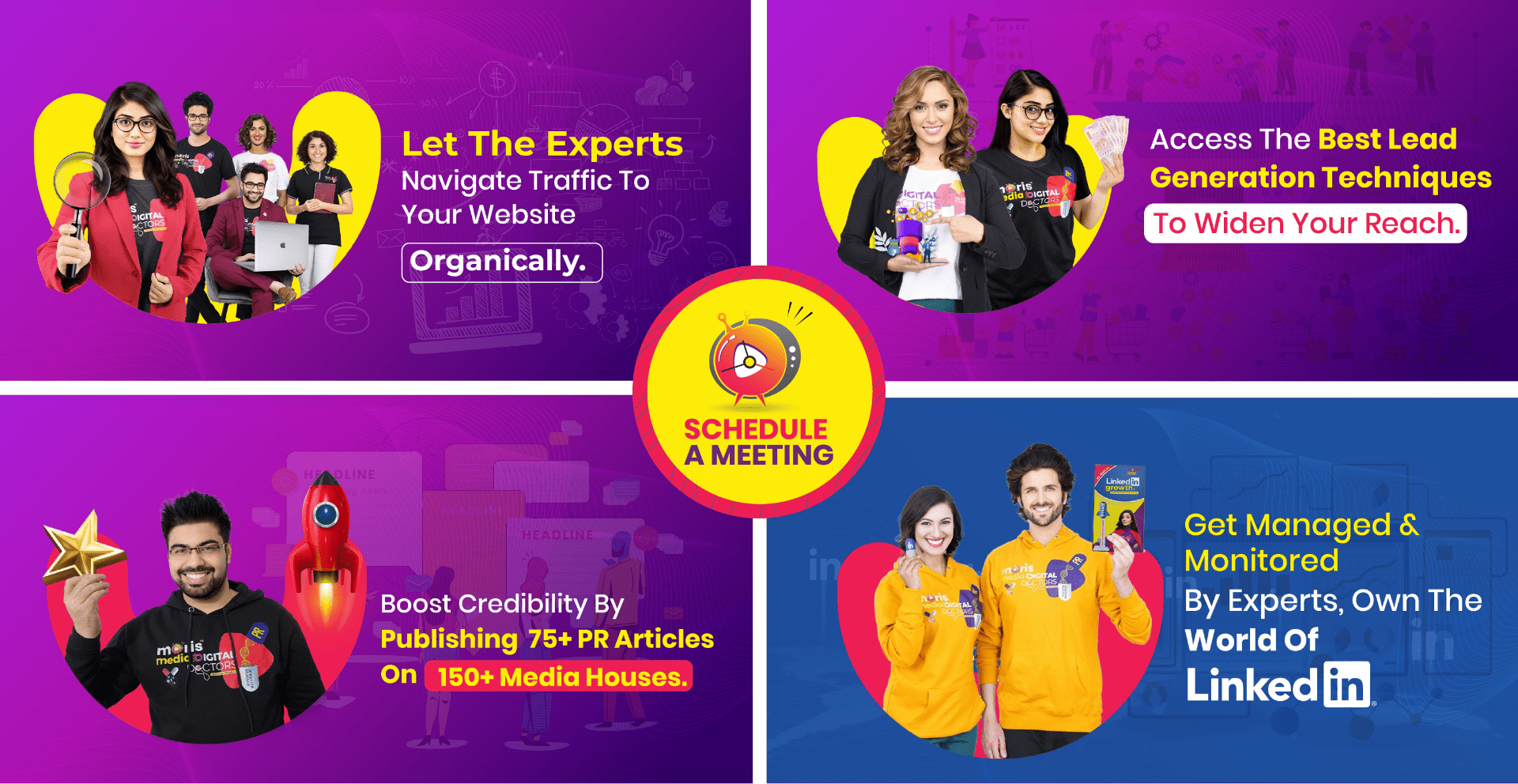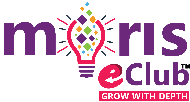Frequently Asked Questions
Paid advertising can be a powerful tool for lead generation. Here's a guide on how to use paid advertising effectively to generate leads:
Set clear goals: Define your lead generation goals and objectives. Do you want to increase email sign-ups, drive traffic to a landing page, or promote a specific offer? Clearly outlining your goals will help you design targeted campaigns.
Identify your target audience: Understand your target audience's demographics, interests, and behaviours. This information will guide your ad targeting options and help you reach the right people who are most likely to be interested in your offerings.
Choose the right advertising platform: Select the advertising platform(s) that align with your goals and where your target audience is most active. Popular options include Google Ads, Facebook Ads, LinkedIn Ads, and Twitter Ads. Each platform has its strengths and targeting options, so choose the ones that best suit your needs.
Develop compelling ad creatives: Create attention-grabbing and compelling ad creatives that resonate with your target audience. Use high-quality visuals, concise and persuasive ad copy, and a clear call-to-action (CTA) that directs users to take the desired action.
Leverage targeting options: Take advantage of the targeting options provided by the advertising platform. Narrow down your audience based on demographics, interests, location, or behaviours to reach the most relevant users. This helps optimize your ad spend and generate higher-quality leads.
Implement conversion tracking: Set up conversion tracking on your website or landing page to measure the effectiveness of your paid advertising campaigns. This allows you to track the number of leads generated, monitor conversion rates, and make data-driven decisions.
Utilize landing pages: Create dedicated landing pages that align with your paid advertising campaigns. These pages should be optimized to capture leads, with clear and concise information, compelling headlines, persuasive copy, and a lead capture form. Direct users from your ads to these landing pages for maximum conversion potential.
Test and optimize: Continuously test different ad variations, targeting options, and landing page elements to identify what works best for your audience. A/B testing allows you to compare different elements and optimize your campaigns based on data-driven insights.
Monitor and analyse results: Regularly review the performance of your paid advertising campaigns. Monitor metrics such as click-through rates, conversion rates, cost per lead, and return on ad spend (ROAS). Identify areas for improvement and make adjustments to optimize your campaigns.
Retarget engaged users: Implement retargeting campaigns to reach users who have shown interest in your business but have not yet converted into leads. Display targeted ads to these users to remind them of your offerings and encourage them to take the desired action.
Set a budget and monitor expenses: Determine your advertising budget and allocate it strategically across different campaigns and platforms. Keep a close eye on your expenses and adjust your budget as needed to ensure you're generating leads within your desired cost range.
Moris Media reminds that effective lead generation through paid advertising requires ongoing monitoring, optimization, and testing. By refining your targeting, ad creatives, and landing pages based on data-driven insights, you can maximize your lead generation efforts and achieve better ROI from your advertising spend.
There are various types of lead generation campaigns that businesses can employ to capture potential customer information and generate leads. Moris Media highlights some common types:
Content Offer Campaigns: These campaigns involve offering valuable content such as e-books, whitepapers, guides, templates, or reports in exchange for contact information. The content serves as an incentive for visitors to provide their details, helping businesses generate leads.
Webinar and Event Campaigns: Webinars and events provide an opportunity to showcase expertise and engage with an audience. Promoting webinars or events and requiring registration to participate helps capture leads. Additionally, follow-up email campaigns can be used to nurture and convert those leads.
Email Marketing Campaigns: Email marketing campaigns focus on building relationships with prospects and nurturing leads through targeted email communications. These campaigns can include newsletters, personalized drip campaigns, or promotional offers sent to an email list.
Social Media Lead Generation Campaigns: Social media platforms offer lead generation campaign options, such as lead generation forms or sponsored posts. These campaigns leverage the targeting capabilities of social media platforms to capture leads directly from the platform.
Paid Advertising Campaigns: Paid advertising campaigns, such as Google Ads or social media ads, can be designed specifically for lead generation. Ad creatives, landing pages, and forms are optimized to encourage users to take the desired action and provide their contact information.
Referral Campaigns: Referral campaigns encourage existing customers or contacts to refer their friends, family, or colleagues to your business. Incentives, such as discounts or rewards, are often offered to both the referrer and the referred, helping generate leads through word-of-mouth.
Influencer Marketing Campaigns: Collaborating with influencers in your industry can help expand your reach and generate leads. Influencers promote your products or services to their followers, directing them to landing pages or lead capture forms.
SEO and Content Marketing Campaigns: By creating high-quality, optimized content and utilizing search engine optimization (SEO) techniques, businesses can attract organic traffic to their website. These campaigns leverage informative blog posts, guides, or resources to capture leads through the website.
Direct Mail Campaigns: While traditional, direct mail campaigns can still be effective for lead generation. Sending personalized letters, postcards, or samples to targeted prospects can capture their attention and encourage them to take further action.
Partnerships and Co-Marketing Campaigns: Collaborating with complementary businesses or industry partners can help expand your reach and access new audiences. Co-marketing campaigns can involve joint webinars, events, or content collaborations to generate leads collectively.
It's important to note that the effectiveness of each campaign type can vary based on your industry, target audience, and specific goals. It's advisable to test and measure the performance of different campaigns to determine which ones work best for your business.
Generating leads through referral programs can be a highly effective strategy as it leverages the power of word-of-mouth and recommendations. Moris Media provides you with a guideline on how to generate leads through referral programs:
Define your referral program goals: Determine the specific objectives of your referral program. Are you aiming to increase customer acquisition, expand your customer base, or boost sales? Clear goals will help you design and measure the success of your program.
Incentivize referrals: Offer incentives to both the referrer and the referred customer. This can be in the form of discounts, rewards, exclusive offers, or even cash incentives. The incentives should be valuable enough to motivate customers to participate in the program.
Make it easy to refer: Simplify the referral process for your customers. Provide clear instructions and an easy-to-use referral mechanism. This can be through a referral link, a referral code, or a dedicated referral landing page. Ensure that the process is user-friendly and accessible across different devices.
Communicate the program: Promote your referral program through various channels to raise awareness. Utilize email marketing, social media, website banners, and in-store signage to communicate the program to your existing customers. Clearly explain the benefits of participating in the program and highlight the value they can gain.
Personalize referral requests: Reach out to your customers directly and personalize your referral requests. This can be through email campaigns, personalized messages, or even one-on-one conversations. Tailor your message to highlight the specific benefits the customer and their referral will receive.
Provide referral resources: Equip your customers with the necessary resources to make referrals. This can include pre-written social media posts, email templates, or shareable content. Make it easy for customers to spread the word about your business and encourage their referrals to take action.
Track and reward referrals: Implement a system to track and attribute referrals accurately. This can be through unique referral codes, referral links, or dedicated landing pages. Ensure you have a mechanism in place to identify and reward successful referrals promptly.
Monitor and measure results: Regularly track and measure the performance of your referral program. Monitor metrics such as the number of referrals, conversion rates, customer acquisition costs, and the lifetime value of referred customers. This data will help you optimize your program and identify areas for improvement.
Encourage customer advocacy: Foster a positive customer experience and actively engage with your customers. Provide exceptional products, services, and customer support to encourage satisfied customers to advocate for your brand organically. Happy customers are more likely to refer others to your business.
Cultivate relationships with advocates: Identify and nurture your top referrers or brand advocates. Show appreciation for their loyalty and referrals through personalized thank-you notes, exclusive perks, or rewards. Building strong relationships with your advocates can lead to ongoing referrals and long-term customer loyalty.
Remember, referral programs are most successful when they offer genuine value to both the referrers and the referred customers. By incentivizing referrals, making the process seamless, and actively promoting your program, you can generate high-quality leads and grow your customer base through the power of word-of-mouth recommendations.
Generating leads through referral programs can be a highly effective strategy as it leverages the power of word-of-mouth and recommendations. Moris Media provides you a guide on how to generate leads through referral programs:
Define your referral program goals: Determine the specific objectives of your referral program. Are you aiming to increase customer acquisition, expand your customer base, or boost sales? Clear goals will help you design and measure the success of your program.
Incentivize referrals: Offer incentives to both the referrer and the referred customer. This can be in the form of discounts, rewards, exclusive offers, or even cash incentives. The incentives should be valuable enough to motivate customers to participate in the program.
Make it easy to refer: Simplify the referral process for your customers. Provide clear instructions and an easy-to-use referral mechanism. This can be through a referral link, a referral code, or a dedicated referral landing page. Ensure that the process is user-friendly and accessible across different devices.
Communicate the program: Promote your referral program through various channels to raise awareness. Utilize email marketing, social media, website banners, and in-store signage to communicate the program to your existing customers. Clearly explain the benefits of participating in the program and highlight the value they can gain.
Personalize referral requests: Reach out to your customers directly and personalize your referral requests. This can be through email campaigns, personalized messages, or even one-on-one conversations. Tailor your message to highlight the specific benefits the customer and their referral will receive.
Provide referral resources: Equip your customers with the necessary resources to make referrals. This can include pre-written social media posts, email templates, or shareable content. Make it easy for customers to spread the word about your business and encourage their referrals to take action.
Track and reward referrals: Implement a system to track and attribute referrals accurately. This can be through unique referral codes, referral links, or dedicated landing pages. Ensure you have a mechanism in place to identify and reward successful referrals promptly.
Monitor and measure results: Regularly track and measure the performance of your referral program. Monitor metrics such as the number of referrals, conversion rates, customer acquisition costs, and the lifetime value of referred customers. This data will help you optimize your program and identify areas for improvement.
Encourage customer advocacy: Foster a positive customer experience and actively engage with your customers. Provide exceptional products, services, and customer support to encourage satisfied customers to advocate for your brand organically. Happy customers are more likely to refer others to your business.
Cultivate relationships with advocates: Identify and nurture your top referrers or brand advocates. Show appreciation for their loyalty and referrals through personalized thank-you notes, exclusive perks, or rewards. Building strong relationships with your advocates can lead to ongoing referrals and long-term customer loyalty.
Remember, referral programs are most successful when they offer genuine value to both the referrers and the referred customers. By incentivizing referrals, making the process seamless, and actively promoting your program, you can generate high-quality leads and grow your customer base through the power of word-of-mouth recommendations.
Video marketing can be a powerful tool for lead generation, as it enables businesses to engage and capture the attention of their target audience in a dynamic and visually appealing way. Moris Media suggests some effective strategies for using video marketing to generate leads:
Create compelling and informative videos: Produce high-quality videos that provide value to your target audience. Create videos that address their pain points, offer solutions, provide educational content, or showcase your products/services. Focus on delivering engaging and informative content that encourages viewers to take the next step.
Use videos on landing pages: Incorporate videos on your landing pages to capture leads. Create a video that highlights the benefits of your offer, explains how it solves a problem, or provides a demonstration. Place a lead capture form near the video or include a call-to-action (CTA) that directs viewers to a lead capture page.
Gate valuable video content: Consider gating some of your video content to collect lead information. Offer access to exclusive videos or a video series in exchange for contact details. This can be done by requiring viewers to fill out a form before accessing the video content.
Optimize video titles and descriptions: Optimize your video titles, descriptions, and tags with relevant keywords. This helps improve the discoverability of your videos on search engines and video-sharing platforms, increasing the likelihood of attracting organic traffic and generating leads.
Include clear CTAs in videos: Incorporate clear and compelling CTAs within your videos. Encourage viewers to subscribe to your email list, download a resource, sign up for a webinar, or visit a specific landing page. Make sure the CTA is visually prominent and provides a clear next step for viewers to take.
Leverage video sharing platforms: Utilize popular video sharing platforms such as YouTube, Vimeo, or LinkedIn Video to reach a wider audience. Optimize your video titles, descriptions, and tags for SEO, and promote your videos across your social media channels, website, and email newsletters.
Embed videos in email campaigns: Enhance your email marketing campaigns by including video content. Embed videos directly within your emails or use enticing video thumbnails linked to landing pages. Videos can help increase email open rates, engagement, and click-through rates, leading to more leads.
Incorporate video testimonials or case studies: Use video testimonials or case studies from satisfied customers to build trust and credibility. These videos can be powerful social proof that can influence potential leads. Include a CTA or lead capture form alongside or after the video to capture interested viewers.
Retarget viewers with video ads: Implement video retargeting campaigns to re-engage viewers who have interacted with your videos but haven't converted into leads. Show targeted video ads to these viewers across various platforms to remind them of your offerings and encourage them to take the desired action.
Analyse video metrics: Regularly monitor and analyse video metrics such as views, engagement rates, watch time, and click-through rates. This data provides insights into the effectiveness of your videos and helps you identify areas for improvement and optimization.
Lead generation through content upgrades involves offering additional valuable content or resources to website visitors in exchange for their contact information. Moris Media provides some best practices to follow for effective lead generation through content upgrades:
Relevant and Valuable Content: Create content upgrades that are highly relevant and valuable to the specific blog post or webpage it accompanies. The content should provide additional insights, in-depth information, or actionable tips that complement the main content and offer further value to the visitor.
Clear and Compelling Call-to-Action (CTA): Place a clear and prominent CTA within the main content, inviting visitors to access the content upgrade. The CTA should clearly communicate the benefit of downloading or accessing the content upgrade and create a sense of urgency or curiosity to encourage conversions.
Simple Opt-in Process: Keep the opt-in process simple and user-friendly. Use a lead capture form that asks for minimal information, typically just a name and email address. The fewer fields to fill, the higher the conversion rate. Optionally, consider implementing a double opt-in process to ensure quality leads.
Prominent Placement: Position the CTA for the content upgrade where it is highly visible to visitors. It could be within the blog post, as a pop-up or slide-in, or at the end of the post. Test different placements to determine the most effective positioning for your specific audience and content.
Highlight Benefits: Clearly communicate the benefits and value of the content upgrade to entice visitors to provide their contact information. Highlight how the upgrade will address their pain points, offer solutions, or provide exclusive insights or resources they can't find elsewhere.
Create Compelling Content Upgrade Titles: Craft attention-grabbing and compelling titles for your content upgrades. The title should clearly convey the value and specific benefits visitors will gain by accessing the upgrade. Use action words, numbers, and keywords that resonate with your target audience.
Deliver on Expectations: Ensure that the content upgrade delivers on the promises made in the CTA and title. Provide high-quality, well-crafted content that exceeds visitors' expectations. This helps build trust, credibility, and a positive perception of your brand.
Follow-Up and Nurture: Once visitors have downloaded the content upgrade, follow up with an automated email sequence to nurture the leads further. Provide additional relevant content, offer assistance, or invite them to engage with your brand through social media or webinars. Build a relationship and keep them engaged with your brand.
Test and Optimize: Continuously test different content upgrades, CTAs, placements, and titles to optimize your lead generation efforts. Monitor conversion rates, engagement metrics, and feedback to identify areas for improvement and make data-driven decisions.
Track and Measure Results: Implement analytics and tracking tools to measure the success of your content upgrades. Monitor key metrics such as conversion rates, lead quality, and the impact on overall lead generation efforts. Use this data to refine your strategy and improve results over time.
Generating leads through live chat on your website can be an effective way to engage with visitors in real-time and capture their information. Moris Media provides you with some strategies to generate leads through live chat:
Proactively engage visitors: Use proactive chat invitations to initiate conversations with website visitors. Set up triggers based on specific visitor behavior, such as time spent on a page, scroll depth, or exit intent. Proactively offering assistance or asking if they need help can encourage engagement and lead generation.
Offer valuable assistance: When engaging with visitors through live chat, provide helpful and personalized assistance. Understand their needs or challenges and offer relevant solutions. By providing value and building rapport, visitors are more likely to share their contact information or express interest in your offerings.
Utilize lead capture forms: Integrate lead capture forms directly within the live chat interface. When a visitor expresses interest or asks for more information, you can request their contact details, such as name and email address, to follow up with them later. Keep the form simple and ensure it doesn't hinder the conversation flow.
Use chatbots for initial qualification: Implement chatbots to handle initial interactions and qualify leads. Chatbots can ask a series of qualifying questions to determine if the visitor is a potential lead. If the visitor meets the criteria, the chatbot can transfer the conversation to a human agent for further engagement.
Provide incentives or offers: Offer exclusive incentives or offers through live chat to entice visitors to share their contact information. This could be a discount, free consultation, e-book, or access to gated content. Promote the offer during the chat conversation and collect the necessary information to deliver the offer.
Personalize the chat experience: Tailor your live chat interactions to the individual visitor. Use their name, reference their previous interactions or browsing behavior, and show genuine interest in their needs. Personalization helps build trust and establishes a connection, increasing the likelihood of lead generation.
Capture feedback and contact information after chat: Once the live chat conversation concludes, ask for feedback on the chat experience and request contact information. This can be done through a post-chat survey or by presenting a form to capture their details. Position the request as a way to follow up and provide additional support.
Integrate with CRM or email marketing software: Ensure your live chat system integrates with your customer relationship management (CRM) or email marketing software. This allows for seamless lead capture and management, enabling you to follow up and nurture leads effectively.
Train and empower chat agents: Provide training to your chat agents to ensure they are knowledgeable about your offerings, customer pain points, and effective lead generation strategies. Empower them to ask relevant questions, offer personalized assistance, and capture lead information when appropriate.
Track and analyse performance: Monitor key metrics such as the number of chats, engagement rates, conversion rates, and the quality of leads generated through live chat. Analyse the data to identify areas for improvement, optimize your approach, and refine your live chat strategy.
Remarketing, also known as retargeting, is a digital marketing strategy that involves targeting and re-engaging users who have previously interacted with your website or digital assets. It allows you to show tailored ads to these users as they browse other websites or platforms, reminding them of your brand and encouraging them to revisit your site and potentially convert into leads. Remarketing can boost lead generation in the following ways:
Targeted Audience: Remarketing allows you to target a specific audience segment—those who have already shown interest in your brand or products. These users are more likely to be receptive to your messaging and offers, making them valuable prospects for lead generation.
Increased Brand Recall: By consistently displaying your brand's ads to users who have interacted with your website, you can reinforce brand recall and stay top of mind. This increases the chances that they will recall your brand and consider engaging with your offerings when they are ready to convert.
Personalized Messaging: With remarketing, you can tailor your ad messaging specifically for the audience segment you are targeting. Customize your ads to address their specific needs, highlight relevant offers, or provide additional incentives to encourage them to take action and become leads.
Lead Nurturing: Remarketing campaigns can be designed to nurture leads at different stages of the buyer's journey. By retargeting users who have shown initial interest but haven't converted, you can guide them through the funnel with content, offers, or reminders to complete their journey and become leads.
Cross-Selling or Upselling: Remarketing is an effective strategy for cross-selling or upselling to existing customers. By retargeting customers who have made a previous purchase, you can showcase related or upgraded products/services to encourage repeat purchases or upgrades, resulting in increased lead generation and revenue.
Abandoned Cart Recovery: Remarketing can be particularly powerful in recovering potential leads who have abandoned their shopping carts. By showing targeted ads featuring the products they left behind or offering incentives to complete the purchase, you can entice them to return and convert into leads.
Increased Conversion Rates: Remarketing campaigns often have higher conversion rates compared to general display advertising. This is because the ads are shown to users who are already familiar with your brand or have shown interest in your offerings, making them more likely to convert into leads.
Cost-Effective Advertising: Remarketing can be cost-effective since you are specifically targeting users who have already engaged with your brand. By focusing your ad spend on a warm audience, you can potentially achieve better returns on investment compared to targeting a cold audience with general advertising.
Tracking and Optimization: Remarketing campaigns provide valuable data and insights into user behavior, engagement, and conversion patterns. analyse the performance metrics of your remarketing campaigns to gain insights and optimize your strategies for improved lead generation.
Moris Media states that by implementing remarketing strategies, you can effectively re-engage users who have shown interest in your brand, maximize lead generation opportunities, and drive conversions. With personalized messaging, targeted ads, and strategic tracking and optimization, remarketing can significantly boost your lead generation efforts.
Customer testimonials and case studies are powerful tools for lead generation as they provide social proof and demonstrate the value of your products or services. Moris Media highlights how you can effectively use customer testimonials and case studies to generate leads:
Collect compelling testimonials: Reach out to satisfied customers and ask for testimonials that highlight their positive experiences with your business. Encourage them to provide specific details about how your product or service solved their problem, improved their results, or made a positive impact on their business.
Showcase testimonials strategically: Place customer testimonials prominently on your website, landing pages, and marketing materials. Feature them on relevant pages such as your homepage, product/service pages, or pricing page. Use visually appealing designs and highlight key quotes or statistics to grab attention.
Include customer testimonials in email campaigns: Incorporate customer testimonials in your email marketing campaigns. Share success stories or highlight customer feedback to demonstrate the value and benefits of your offerings. Use testimonials as social proof to build trust and encourage leads to take action.
Create case studies: Develop in-depth case studies that showcase how your products or services helped specific customers achieve their goals. Include details about the customer's challenges, the solution provided, and the measurable results obtained. Case studies provide a comprehensive view of your capabilities and demonstrate your expertise.
Gate case studies: Consider gating some of your more detailed or comprehensive case studies behind a lead capture form. This allows you to capture contact information from leads interested in accessing the valuable content. Request minimal information like name and email address to encourage conversions.
Use video testimonials and case study interviews: Capture video testimonials or conduct interviews with satisfied customers for case studies. Video content can be more engaging and persuasive, providing an authentic and personal touch. Embed these videos on your website or share them on social media to reach a wider audience.
Leverage testimonials on social media: Share customer testimonials and case studies on your social media platforms. Use quotes, snippets, or visuals to create impactful social media posts. Encourage customers to share their experiences and tag your brand, further amplifying your reach and social proof.
Segment testimonials and case studies: Categorize testimonials and case studies based on industry, use case, or customer profile. This allows you to showcase relevant content to specific segments of your target audience. Tailored testimonials and case studies increase their relatability and effectiveness in generating leads.
Incorporate testimonials in lead capture forms: Add short customer testimonials near your lead capture forms or contact forms. Positive testimonials act as additional reassurance and can help alleviate any doubts or concerns that potential leads may have about providing their contact information.
Offer incentives for testimonials: Encourage customers to provide testimonials or participate in case studies by offering incentives. This can include discounts, free upgrades, or exclusive access to new features or resources. Incentives can motivate customers to share their positive experiences and generate more leads for your business.
Artificial intelligence (AI) plays a significant role in lead generation by enhancing efficiency, personalization, and decision-making. Moris Media shows you some key ways AI is utilized in lead generation:
Data analysis and segmentation: AI algorithms can analyse large volumes of data to identify patterns, trends, and correlations. By applying AI to customer data, businesses can segment leads based on various factors such as demographics, behaviours, interests, or buying propensity. This enables more targeted and personalized lead generation efforts.
Predictive lead scoring: AI-powered lead scoring models can assess the likelihood of a lead becoming a customer based on historical data, lead attributes, and behavioural signals. AI algorithms analyse multiple data points to assign a score to each lead, helping prioritize and focus on the most promising leads for follow-up.
Chatbots and virtual assistants: AI-driven chatbots and virtual assistants can engage with website visitors in real-time, answering their questions, and collecting lead information. Chatbots use natural language processing (NLP) to understand and respond to user inquiries, providing instant support and capturing lead details for further nurturing.
Content personalization: AI algorithms can analyse user preferences, behaviours, and interactions to personalize content recommendations. By serving relevant content to each visitor based on their interests and browsing history, businesses can increase engagement and capture more leads.
Lead nurturing automation: AI-powered marketing automation platforms enable businesses to automate lead nurturing processes. These platforms can send personalized emails, deliver targeted content, and trigger automated workflows based on user behavior or predefined criteria. AI helps optimize the timing and content of these interactions for more effective lead nurturing.
Natural language processing for lead analysis: AI-driven natural language processing techniques can analyse text data, such as social media posts, comments, or customer feedback, to gain insights into lead sentiment, preferences, or intent. This information helps refine lead generation strategies and personalize interactions.
Intent analysis and predictive analytics: AI algorithms can analyse user behavior, search patterns, and interactions to identify buying intent. By understanding user intent, businesses can tailor their lead generation efforts to target users who are actively seeking solutions or making purchase decisions.
Lead enrichment and data augmentation: AI technologies can enhance lead data by enriching it with additional relevant information. AI algorithms can search, analyse, and extract data from various sources to provide valuable insights, such as social media profiles, job titles, company information, or contact details. This helps create more comprehensive lead profiles.
Dynamic pricing optimization: AI can analyse market trends, customer behavior, and competitive pricing data to optimize lead generation strategies related to pricing. By dynamically adjusting prices or offering personalized discounts, businesses can attract and convert leads more effectively.
Lead conversion prediction: AI algorithms can analyse historical data and user patterns to predict lead conversion probabilities. By identifying common characteristics or behaviours of leads that have successfully converted, businesses can focus on acquiring similar leads and optimize their lead generation efforts accordingly.
Optimizing your lead generation strategy for local businesses requires a targeted approach to reach and engage with your local target audience effectively. Moris Media provides you with some key tactics to optimize your lead generation strategy for local businesses:
Local SEO: Optimize your website and online presence for local search. Focus on local keywords, include your business address and phone number on your website, and create location-specific landing pages. Claim and optimize your Google My Business listing to appear in local search results and enhance your local visibility.
Local Content Marketing: Create content that is relevant and valuable to your local audience. Produce blog posts, articles, or videos that address local topics, events, or interests. Share local success stories or highlight how your business serves the specific needs of the local community.
Online Directories and Listings: Ensure your business is listed accurately and consistently across online directories, local business listings, and review sites. This includes platforms like Yelp, Yellow Pages, and industry-specific directories. Optimize your listings with relevant keywords, business descriptions, and high-quality images.
Local Online Advertising: Utilize online advertising platforms to target local audiences effectively. Platforms like Google Ads, Facebook Ads, or local advertising networks allow you to geographically target your ads to reach potential customers in your area. Use location-based targeting and local keywords in your ad campaigns.
Online Reviews and Reputation Management: Encourage satisfied customers to leave online reviews on platforms like Google, Yelp, or industry-specific review sites. Positive reviews build trust and credibility, attracting more local leads. Monitor and respond to reviews promptly to maintain a positive online reputation.
Local Partnerships and Collaborations: Collaborate with other local businesses or organizations to cross-promote each other's services. Joint marketing efforts, co-sponsored events, or referral programs can expand your reach within the local community and generate leads through word-of-mouth.
Local Events and Sponsorships: Participate in local events, sponsor community activities, or host workshops or webinars targeting local audiences. These activities not only increase brand visibility but also provide opportunities to engage with potential leads in person and collect contact information.
Mobile Optimization: Ensure your website is mobile-friendly and optimized for local searches. Local customers often use their mobile devices to search for businesses, services, or products in their vicinity. Make it easy for mobile users to find and engage with your business by providing a seamless mobile experience.
Offline Marketing: Don't neglect traditional offline marketing methods for local businesses. Distribute flyers, postcards, or brochures in local neighbourhoods, community centres, or relevant local businesses. Attend local trade shows, networking events, or sponsor local sports teams to increase brand awareness and generate leads.
Customer Referrals and Word-of-Mouth: Encourage satisfied local customers to refer their friends, family, or colleagues to your business. Implement referral programs, offer incentives, or simply ask for referrals. Word-of-mouth marketing is powerful in local communities and can generate valuable leads.
Tracking key metrics is crucial to evaluating the success and effectiveness of your lead generation campaigns. Moris Media highlights some key metrics you should track in lead generation campaigns:
Conversion Rate: The conversion rate measures the percentage of website visitors who take the desired action and convert into leads. It is calculated by dividing the number of conversions by the total number of visitors and multiplying by 100. A higher conversion rate indicates that your campaign is effectively capturing and converting leads.
Cost per Lead (CPL): The cost per lead measures the average cost incurred to generate a single lead. It is calculated by dividing the total campaign cost by the number of leads generated. Tracking CPL helps assess the cost-effectiveness of your lead generation efforts and allows you to optimize your budget allocation.
Return on Investment (ROI): ROI measures the profitability of your lead generation campaigns by comparing the revenue generated from leads against the cost of acquiring those leads. It is calculated by subtracting the campaign cost from the revenue generated and dividing the result by the campaign cost, then multiplying by 100. A positive ROI indicates a profitable campaign.
Click-Through Rate (CTR): CTR measures the percentage of users who click on your ad or call-to-action button. It is calculated by dividing the number of clicks by the number of impressions or views, multiplied by 100. A higher CTR indicates that your ad or CTA is compelling and engaging to users, driving them to take action.
Landing Page Conversion Rate: Landing page conversion rate measures the percentage of visitors who convert on your landing page. It is calculated by dividing the number of conversions by the number of visitors to the landing page, multiplied by 100. Optimizing your landing page conversion rate ensures that you are effectively capturing leads.
Cost per Click (CPC): CPC measures the average cost incurred for each click on your ads. It is calculated by dividing the total ad spend by the number of clicks. Tracking CPC helps manage your advertising budget and optimize your campaigns for better click efficiency.
Lead Quality: Assessing the quality of leads generated is essential to determine their potential value to your business. Track metrics such as lead source, lead qualification, and lead-to-customer conversion rate to evaluate lead quality. Understanding lead quality helps refine targeting strategies and improve overall lead generation efforts.
Time to Conversion: Time to conversion measures the duration it takes for a lead to convert into a customer. It helps evaluate the efficiency of your lead nurturing and conversion processes. Tracking time to conversion allows you to identify bottlenecks, streamline workflows, and optimize lead nurturing strategies.
Engagement Metrics: Track engagement metrics such as time on site, page views, and bounce rate to gauge user interest and behavior. Higher engagement indicates that your content or ads are resonating with your target audience and increasing the chances of lead conversion.
Lead Source Performance: Evaluate the performance of different lead sources or channels to identify the most effective sources for lead generation. Track metrics such as lead volume, conversion rates, and cost per lead by source. This information helps you allocate your resources and budget effectively.
LinkedIn can be a powerful platform for generating leads and reaching a professional audience. As the leading LinkedIn Marketing agency in India, Moris Media provides some strategies to generate leads through LinkedIn marketing:
Optimize your LinkedIn profile: Create a compelling and professional LinkedIn profile for yourself and your business. Use keywords in your headline, summary, and experience sections to make it easier for potential leads to find you through search.
Build a targeted network: Connect with individuals who fit your target audience or have the potential to become leads. Personalize connection requests and engage in meaningful conversations to build relationships. Join relevant LinkedIn groups and participate in discussions to expand your network further.
Share valuable content: Share informative and valuable content on your LinkedIn feed and in relevant groups. Provide insights, tips, industry news, or thought leadership content that resonates with your target audience. Engage with comments and encourage discussions to establish yourself as an authority in your field.
Utilize LinkedIn Ads: Consider using LinkedIn's advertising platform to run targeted ad campaigns. You can target ads based on industry, job title, location, or other relevant criteria. Use compelling ad creatives, clear CTAs, and targeted landing pages to capture leads directly from your ads.
Publish LinkedIn articles: Publish long-form articles directly on LinkedIn's publishing platform. This allows you to showcase your expertise and reach a wider audience. Include a strong call-to-action at the end of your articles to encourage readers to visit your website or contact you.
Engage with LinkedIn Pulse: Engage with the LinkedIn Pulse platform by commenting on relevant articles, following influential authors, and publishing your own content. This helps increase your visibility and reach within the LinkedIn community and attracts potential leads.
Participate in LinkedIn Groups: Join industry-specific LinkedIn Groups and actively participate in discussions. Offer valuable insights, answer questions, and share your expertise. Engaging in group discussions allows you to build connections and position yourself as a knowledgeable resource, which can lead to lead generation opportunities.
Directly message potential leads: Use LinkedIn's messaging feature to send personalized messages to potential leads. Avoid generic sales pitches and focus on building relationships and offering value. Personalize your messages based on their profiles and interests to increase the chances of engagement.
Offer lead magnets: Create valuable content assets, such as e-books, whitepapers, or guides, and offer them as lead magnets. Share the content on LinkedIn and direct interested users to a landing page where they can provide their contact information to access the content.
Collect recommendations and endorsements: Request recommendations and endorsements from satisfied clients or business partners. Positive social proof strengthens your credibility and attracts potential leads who are more likely to trust and engage with you.
Personalization plays a crucial role in lead generation as it enables businesses to tailor their marketing efforts to the individual needs, preferences, and characteristics of their target audience. Moris Media highlights how personalization contributes to lead generation:
Improved User Experience: Personalization enhances the user experience by delivering content, offers, and messages that are relevant and valuable to the individual. By understanding the specific needs and interests of each lead, businesses can create a more personalized and engaging experience, increasing the likelihood of capturing their attention and generating leads.
Increased Engagement: Personalized marketing campaigns have higher engagement rates as they resonate with the individual on a more meaningful level. By addressing their pain points, providing relevant solutions, and using language and messaging that speaks directly to their interests, businesses can capture the interest and engagement of leads, encouraging them to take action.
Enhanced Relevance: Personalization ensures that the content and offers presented to leads are highly relevant to their specific needs and stage in the buyer's journey. By delivering the right message at the right time, businesses can demonstrate their understanding of the lead's challenges and present solutions that align with their current needs, increasing the likelihood of lead conversion.
Improved Lead Nurturing: Personalization is crucial in lead nurturing efforts. By segmenting leads based on their interests, behaviours, or demographics, businesses can deliver targeted and personalized content that guides them through the buyer's journey. Personalized nurturing campaigns help build trust, establish credibility, and maintain engagement with leads, increasing the chances of conversion.
Enhanced Lead Scoring: Personalization allows for more accurate lead scoring and qualification. By tracking lead interactions, behaviours, and preferences, businesses can assign lead scores based on their specific criteria. This enables the prioritization of high-quality leads for further nurturing or sales follow-up, optimizing lead generation efforts.
Better Conversion Rates: Personalized marketing has been shown to have higher conversion rates compared to generic, one-size-fits-all approaches. When leads feel that a business understands their needs, offers relevant solutions, and communicates in a personalized manner, they are more likely to trust the brand and convert into customers.
Relationship Building: Personalization helps build stronger relationships with leads. By demonstrating a genuine understanding of their needs, providing relevant and valuable content, and engaging in personalized interactions, businesses can foster a sense of connection and loyalty. Strong relationships increase the likelihood of repeat business, referrals, and long-term customer value.
Data Insights and Optimization: Personalization allows businesses to gather valuable data on lead preferences, behaviours, and responses. This data provides insights into what resonates with leads and what strategies are most effective in generating conversions. Businesses can use this data to optimize their lead generation strategies, refine targeting, and improve overall marketing effectiveness.
Leveraging partnerships and collaborations can be an effective strategy for lead generation as it allows businesses to tap into new audiences, leverage complementary expertise, and benefit from shared resources. Here are some ways to leverage partnerships and collaborations for lead generation:
Identify Strategic Partners: Identify businesses or organizations that share a similar target audience or have complementary products or services. Look for partners that align with your brand values and have a non-competitive relationship with your business. Strategic partnerships maximize the potential for lead generation.
Joint Marketing Efforts: Collaborate with your partners on joint marketing campaigns to reach a wider audience. This can include co-branded content, joint webinars or workshops, shared social media campaigns, or cross-promotional activities. By combining resources and expertise, you can generate leads collectively.
Referral Programs: Establish referral programs with your partners to incentivize them to refer leads to your business. Offer mutual incentives for successful referrals, such as discounts, commissions, or rewards. Referral programs can tap into the trust and relationships your partners have built with their audience, increasing the chances of generating high-quality leads.
Co-host Events or Webinars: Organize events or webinars in collaboration with your partners. Pool your resources, expertise, and networks to deliver valuable content and attract attendees. These events provide opportunities to capture leads through registration forms, follow-up emails, and networking opportunities.
Guest Blogging and Content Sharing: Contribute guest blog posts or articles on your partners' websites or invite them to contribute to your content. By leveraging each other's audiences and sharing valuable content, you can generate leads and establish thought leadership within the industry.
Bundle or Package Offers: Create bundled offerings or package deals that combine products or services from your business and your partners. This provides added value to customers and encourages lead generation through cross-selling or upselling opportunities. Promote these joint offerings through your marketing channels and those of your partners.
Co-sponsorship and Co-branding: Collaborate with partners to co-sponsor events, charities, or industry initiatives. Co-brand marketing materials, such as banners, signage, or promotional items, to increase brand visibility. Joint efforts create a stronger presence and attract leads who are interested in both brands.
Lead Sharing and Lead Exchanges: Establish lead sharing or lead exchange programs with your partners. This involves sharing leads or customer databases to expand your reach and tap into new potential customers. Ensure that proper data protection and privacy measures are in place when sharing customer information.
Collaborative Content and Resource Creation: Collaborate with partners to create valuable content assets such as e-books, whitepapers, or industry reports. Pool your expertise and resources to develop comprehensive resources that address common challenges or provide insights. Collect lead information in exchange for accessing the shared content.
Continuous Relationship Building: Maintain open lines of communication and foster ongoing relationships with your partners. Regularly discuss opportunities for collaboration, share industry insights, and support each other's initiatives. Building strong, mutually beneficial relationships with partners increases the potential for long-term lead generation success.
Moris Media says it is important to establish clear agreements and guidelines when entering into partnerships or collaborations. Clearly define roles, responsibilities, and expectations to ensure a smooth and mutually beneficial working relationship. By leveraging partnerships and collaborations, you can expand your reach, tap into new audiences, and generate leads that may have otherwise been inaccessible.
Moris Media, India’s top lead generation agency, highlights some notable trends that have been shaping the field of lead generation.
Interactive Content: Interactive content, such as quizzes, assessments, calculators, and interactive videos, is gaining popularity for lead generation. These types of content engage users, provide personalized experiences, and collect valuable data in the process.
Conversational Marketing: Conversational marketing focuses on real-time interactions and personalized conversations with leads. Chatbots, live chat, and messaging apps are used to engage leads, answer their questions, and guide them through the buyer's journey.
Artificial Intelligence (AI) and Machine Learning (ML): AI and ML technologies are being leveraged to automate and optimize lead generation processes. AI-powered chatbots, predictive analytics, lead scoring, and personalization algorithms enhance efficiency and improve targeting.
Voice Search Optimization: With the rise of voice assistants and smart speakers, optimizing content for voice search is becoming important for lead generation. Marketers need to optimize their websites and content to match the conversational queries users make through voice search.
Account-Based Marketing (ABM): ABM focuses on targeting specific accounts or companies rather than individual leads. It involves personalized marketing efforts tailored to the needs and characteristics of key accounts, aiming to generate high-value leads and drive business growth.
Influencer Marketing: Collaborating with industry influencers to promote products or services is an effective way to generate leads. Influencers have established credibility and a loyal following, and their endorsements can influence purchasing decisions.
Privacy and Data Protection: Increasing concerns about data privacy have led to stricter regulations such as the General Data Protection Regulation (GDPR), Information Technology Act and other consumer protection acts worldwide. Businesses need to ensure compliance and adopt transparent data collection and handling practices to build trust with leads.
Omni-Channel Marketing: Lead generation efforts are moving beyond single-channel campaigns. Integration and synchronization of multiple marketing channels, such as social media, email, search, and offline channels, are becoming essential to provide consistent and personalized experiences across touchpoints.
Video Marketing: Video continues to dominate online content consumption. Using video in lead generation campaigns helps captivate and engage users, convey information effectively, and build brand awareness. Live videos, webinars, and video testimonials are gaining traction.
Personalization and Customer Experience: Customers increasingly expect personalized experiences throughout their buyer's journey. Tailoring content, offers, and interactions to specific leads' preferences and needs enhances engagement, conversion rates, and customer loyalty.
It is important for you to realise that the lead generation landscape is constantly evolving, and new trends are continuously emerging. Keeping an eye on the latest developments and adapting strategies accordingly is crucial to staying ahead in lead generation efforts.


















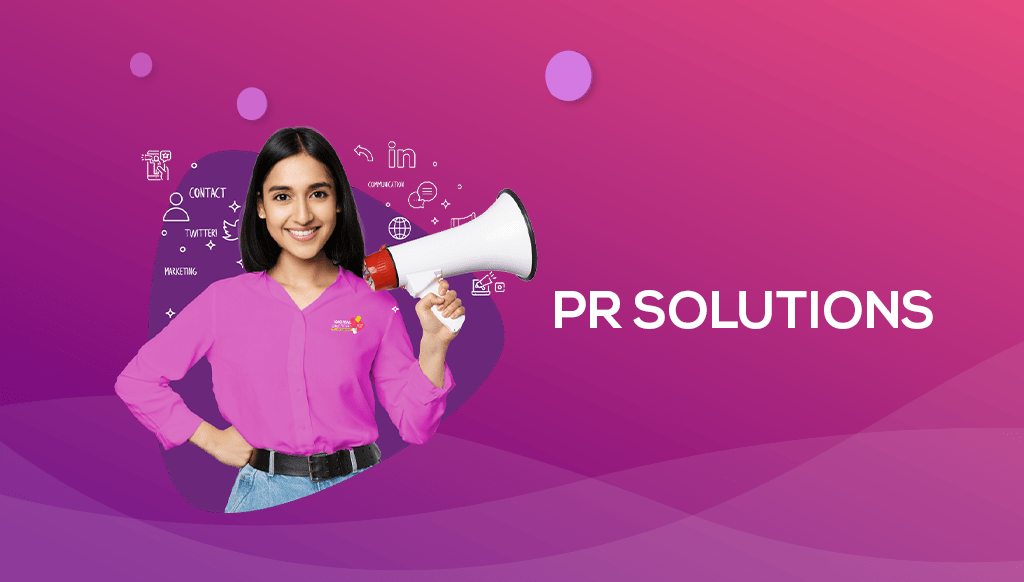
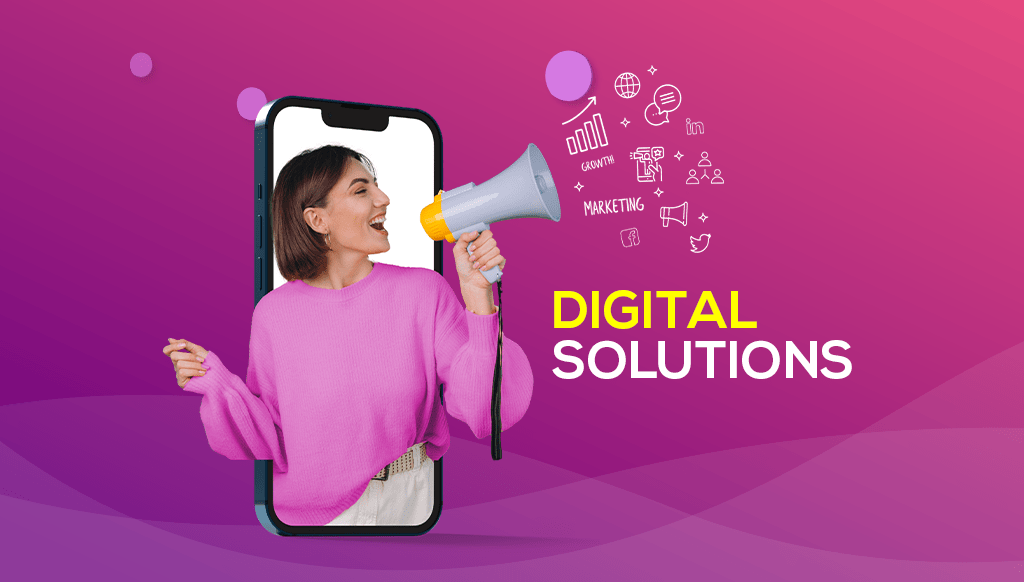
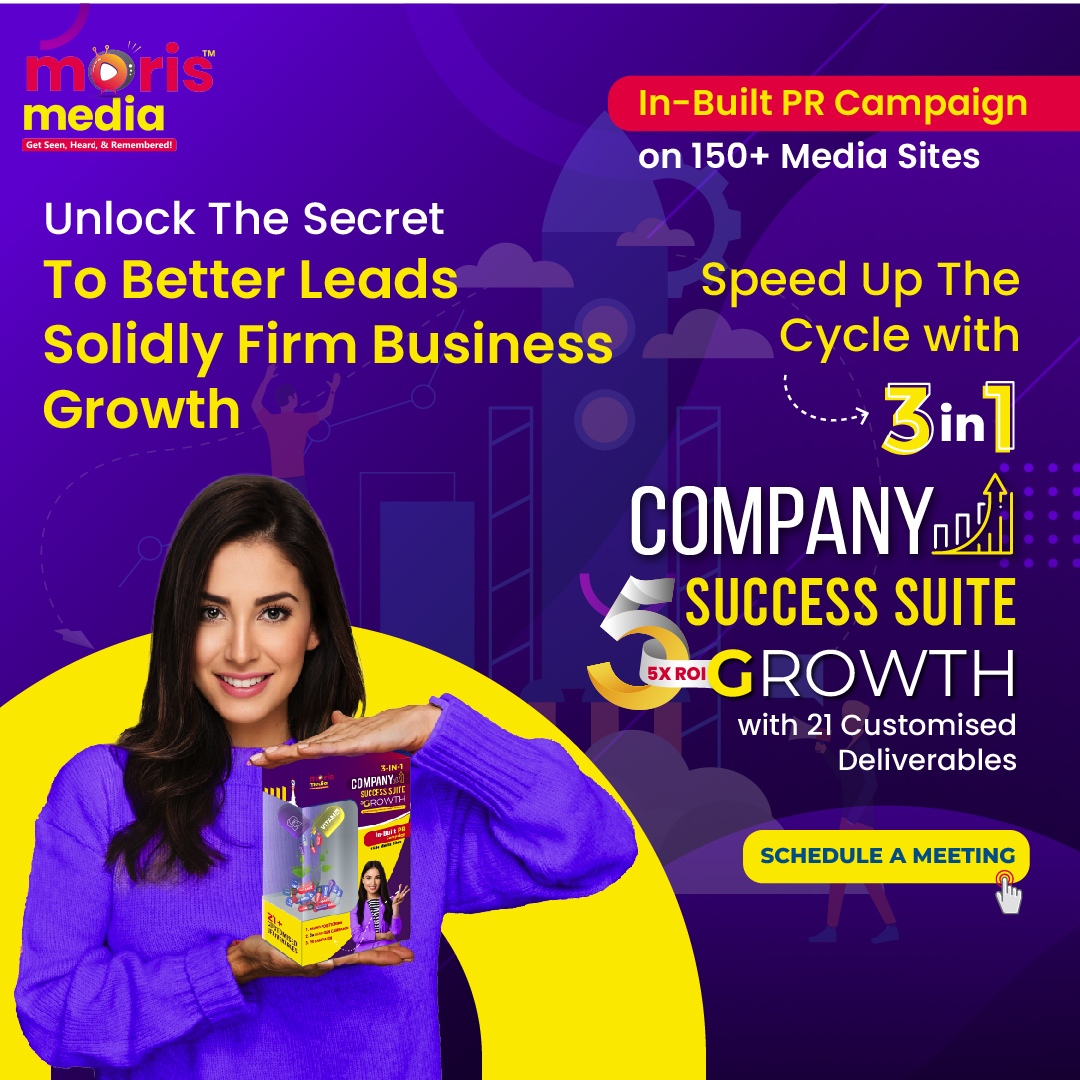

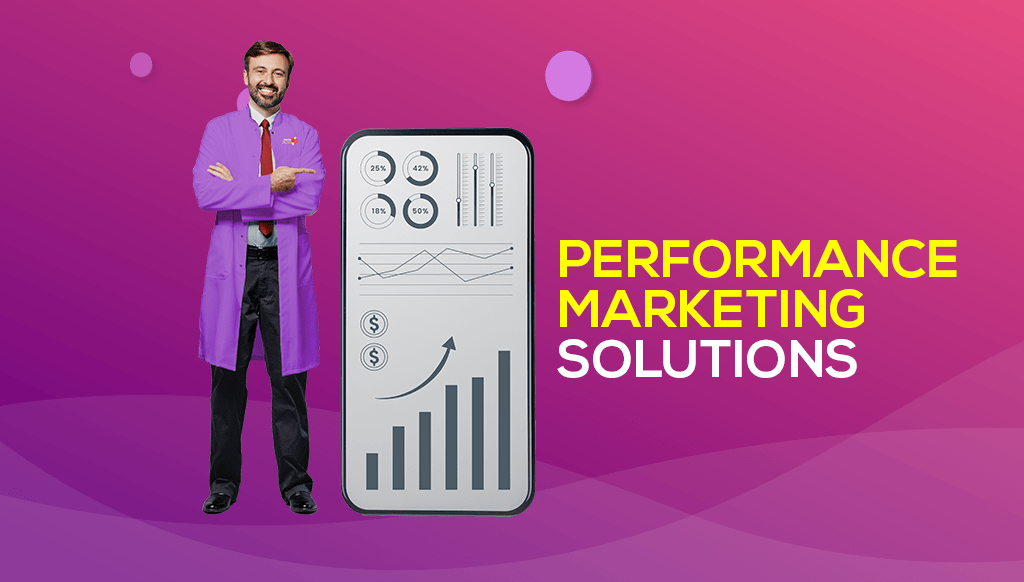
.png?v=1676960503)
